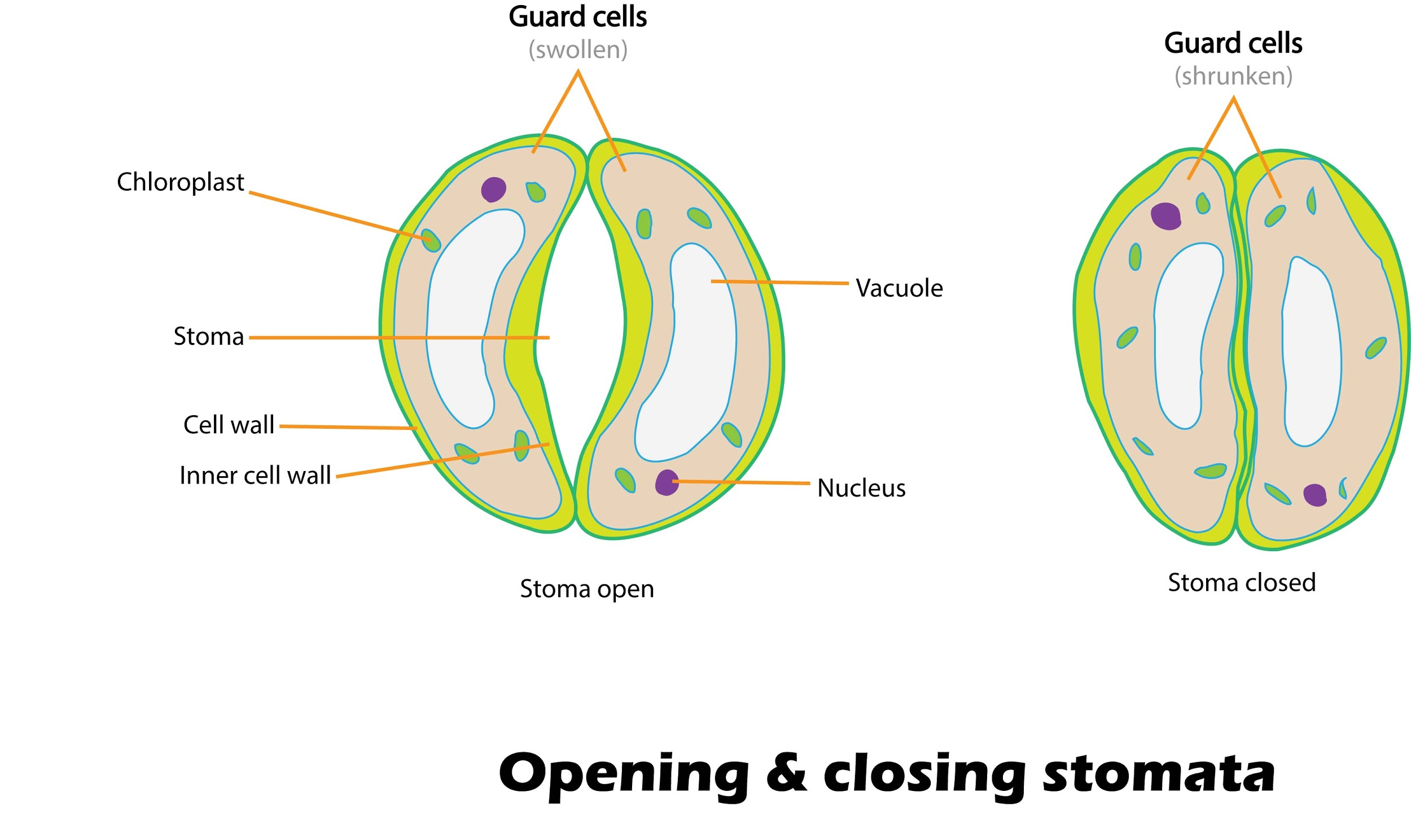
Which of the following have sunken stomata?
(a)Nerium
(b)Mangifera
(c)Hydrilla
(d)Zea may
Answer
550.2k+ views
Hint: Sunken stomata are stomata present in small pits in a leaf which helps reduce the rate of water loss due to transpiration.
Complete answer:
Sunken stomata are present in plants that are usually in areas of water scarcity i.e., arid areas or deserts where to prevent water loss due to transpiration. Plants generally have stomata on the surface of leaves, but sunken stomata are embedded in the left surface, also plants with sunken stomata have a fewer number of stomata on their leaves compared to regular plants. These sunken stomata are also surrounded by hair-like structures called trichomes to further prevent water loss. Plants with sunken stomata are usually xerophytes. This thus enables the plant to accomplish optimum gas exchange with minimal water loss since stomata can remain open longer and the $CO_2$ in the leaf or leave like structure can be maintained at required concentrations for these plants to be able to carry out photosynthesis throughout the day time.

So, the correct answer is ‘Nerium.’
Note:
- Leaves have different types of adaptations to tackle water loss due to transpiration:
-Leave are reduced to spines: Here spines reduce surface area thus drastically reducing the rate of transpiration.
-Reduction in the number of stomata: stomatal opening for gaseous exchange causes loss of water in arid conditions. Reduction in the number of stomata can help tackle this but almost maintain the gaseous exchange.
-Waxy cuticle on the leaves: Waxy cuticle physically stops water loss due to evaporation.
-Leaf rolling: this traps mist air which increases relative humidity and decreases exposed surface thus reducing the rate of transpiration.
Complete answer:
Sunken stomata are present in plants that are usually in areas of water scarcity i.e., arid areas or deserts where to prevent water loss due to transpiration. Plants generally have stomata on the surface of leaves, but sunken stomata are embedded in the left surface, also plants with sunken stomata have a fewer number of stomata on their leaves compared to regular plants. These sunken stomata are also surrounded by hair-like structures called trichomes to further prevent water loss. Plants with sunken stomata are usually xerophytes. This thus enables the plant to accomplish optimum gas exchange with minimal water loss since stomata can remain open longer and the $CO_2$ in the leaf or leave like structure can be maintained at required concentrations for these plants to be able to carry out photosynthesis throughout the day time.

So, the correct answer is ‘Nerium.’
Note:
- Leaves have different types of adaptations to tackle water loss due to transpiration:
-Leave are reduced to spines: Here spines reduce surface area thus drastically reducing the rate of transpiration.
-Reduction in the number of stomata: stomatal opening for gaseous exchange causes loss of water in arid conditions. Reduction in the number of stomata can help tackle this but almost maintain the gaseous exchange.
-Waxy cuticle on the leaves: Waxy cuticle physically stops water loss due to evaporation.
-Leaf rolling: this traps mist air which increases relative humidity and decreases exposed surface thus reducing the rate of transpiration.
Recently Updated Pages
Master Class 12 Business Studies: Engaging Questions & Answers for Success

Master Class 12 Economics: Engaging Questions & Answers for Success

Master Class 12 English: Engaging Questions & Answers for Success

Master Class 12 Maths: Engaging Questions & Answers for Success

Master Class 12 Social Science: Engaging Questions & Answers for Success

Master Class 12 Chemistry: Engaging Questions & Answers for Success

Trending doubts
What is meant by exothermic and endothermic reactions class 11 chemistry CBSE

Which animal has three hearts class 11 biology CBSE

10 examples of friction in our daily life

One Metric ton is equal to kg A 10000 B 1000 C 100 class 11 physics CBSE

1 Quintal is equal to a 110 kg b 10 kg c 100kg d 1000 class 11 physics CBSE

Difference Between Prokaryotic Cells and Eukaryotic Cells




